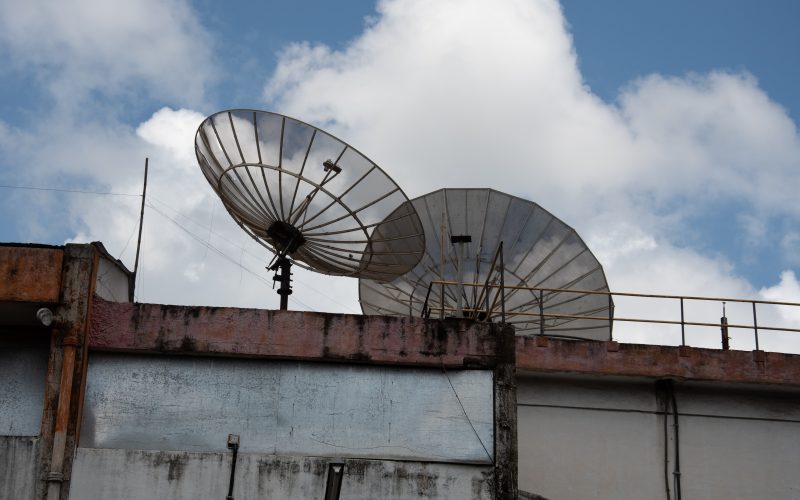Are you ready for the next level of communication? Say hello to 5G technology! This groundbreaking innovation is set to revolutionize the way we connect and communicate with each other. From lightning-fast internet speeds and seamless connectivity to multi-device compatibility and increased reliability, 5G has the potential to transform every aspect of our digital lives. But what exactly is 5G technology, and how does it work? In this blog post, we will delve into the basics of 5G technology, its benefits, challenges, and future prospects. So buckle up as we explore the exciting world of 5G communication!
What is 5G Technology?
The fifth generation of wireless technology, 5G, is coming soon to phones and other devices. So what is 5G and what can we expect from it?
5G is the next generation of wireless technology that promises faster speeds, lower latency, and more reliability. It’s an upgrade from the current 4G LTE network, which most smartphones use.
With 5G, you’ll be able to download movies and shows in seconds, play online games without lag, and video chat with friends without interruption. Latency, or the time it takes for data to travel from your device to the server and back again, will be significantly reduced. And because 5G uses a higher frequency of radio waves than 4G LTE, it can carry more data with less congestion.
Rollout of 5G service is already underway in select cities across the United States. But it will be a few years before it’s available nationwide. In the meantime, you can get a taste of 5G with home broadband services like Verizon’s 5G Home or AT&T’s Fixed Wireless Internet.
How 5G Technology Works
5G technology is the next generation of mobile networks. It promises faster speeds, lower latency, and more reliability than ever before. But how does 5G actually work?
In order to understand how 5G works, we first need to take a look at the basics of wireless communication. Wireless communication happens when two devices share information using electromagnetic waves. These waves are able to travel through the air and can be used to transmit data from one device to another.
One of the key things that makes 5G different from previous generations of wireless networks is the frequency that it uses. 5G uses a higher frequency than previous generations, which allows for more data to be transmitted in a given amount of time. This higher frequency also comes with some challenges, however, which we’ll discuss later on.
So how does all of this translate into faster speeds and lower latency? The higher frequency that 5G uses means that there is less interference from other devices and signals. This results in a clearer signal and less dropped connections. In addition, the higher frequency allows for more data to be transmitted in a shorter amount of time, which leads to faster speeds.
However, there are some challenges that come with using a higher frequency for 5G. One challenge is that the waves have a harder time travelling long distances and penetrating walls and other obstacles. This means that 5G will likely have a shorter range than earlier generations of wireless networks. Another challenge is that the higher frequency can lead
The Benefits of 5G Technology
5G technology is the next generation of wireless communication, promising faster speeds, lower latency, and more reliable connections. While 5G is still in its early stages, the potential benefits are already becoming clear.
For consumers, 5G means better mobile broadband experiences with higher speeds and lower latency. This will enable new immersive experiences like virtual reality and augmented reality. For businesses, 5G promises to revolutionize many industries with its high-speed and low-latency connectivity. Some of the potential applications include remote surgery, autonomous vehicles, and industrial IoT.
In addition to the benefits for consumers and businesses, 5G also has the potential to bring social and economic benefits to society as a whole. For example, 5G can help close the digital divide by delivering high-speed internet access to rural areas. It can also enable smart cities by connecting different devices and infrastructure in real-time.
The full potential of 5G technology is still being explored. But as we continue to learn more about this exciting new technology, it’s clear that there are many reasons to be excited about the future of 5G.
The Drawbacks of 5G Technology
The Drawbacks of 5G Technology
With any new technology, there are bound to be some drawbacks. The same is true for 5G technology. Some of the potential drawbacks of 5G technology include:
1. Increased radiation exposure: One of the major concerns with 5G technology is the increased exposure to electromagnetic radiation (EMR). This is because 5G relies on higher frequency waves than previous generations of cellular technology. While the long-term effects of EMR exposure are still not fully known, some studies have linked it to health problems like cancer and reproductive issues.
2. Interference with weather forecasting: Another potential drawback of 5G is that it could interfere with weather forecasting. This is because the high frequency waves used by 5G can scatter off of water droplets in the atmosphere, resulting in false readings being sent to weather stations. This could potentially lead to inaccurate weather forecasts being issued, which could put people in danger if they are not adequately prepared for severe weather events.
3. Security risks: As with any new technology, there are always security risks associated with it. With 5G, these risks include the possibility of hacking and data breaches. As more and more devices connect to the 5G network, there will be an increased risk for cyberattacks. Additionally, as 5G networks become more widespread, they will become a prime target for terrorists and other groups who wish to disrupt communication networks
The Future of 5G Technology
The future of 5G technology is shrouded in potential but faces many challenges that need to be overcome. For starters, 5G will require a new, much more densified network of small cell sites. This will present a massive deployment challenge, as well as requiring new power and backhaul infrastructure. In addition, the high frequency spectrum required for 5G has yet to be allocated by international regulators.
5G promises speeds up to 100 times faster than current 4G networks and latency as low as 1 millisecond. These advances will enable new applications and services that are not possible with today’s technology. For example, hospitals will be able to connect to medical devices in real-time for remote monitoring and diagnosis; self-driving cars will be able to communicate with each other and the infrastructure around them; and factories will be able to use augmented reality for maintenance and repairs.
The full potential of 5G technology can only be realized if there is global interoperability and standards are adopted across the industry. This is a daunting task given the diverse range of stakeholders involved, but it is essential for the success of 5G.
Conclusion
From faster speeds to better data security, 5G technology is sure to revolutionize the way we communicate with one another. It offers us unprecedented opportunities for connection and collaboration through the power of wireless networks and promises to open up a world of possibilities in terms of how we stay connected. As 5G continues to become more widely available over the next few years, it will be interesting to see what new communication solutions are developed that utilize this new technology.












